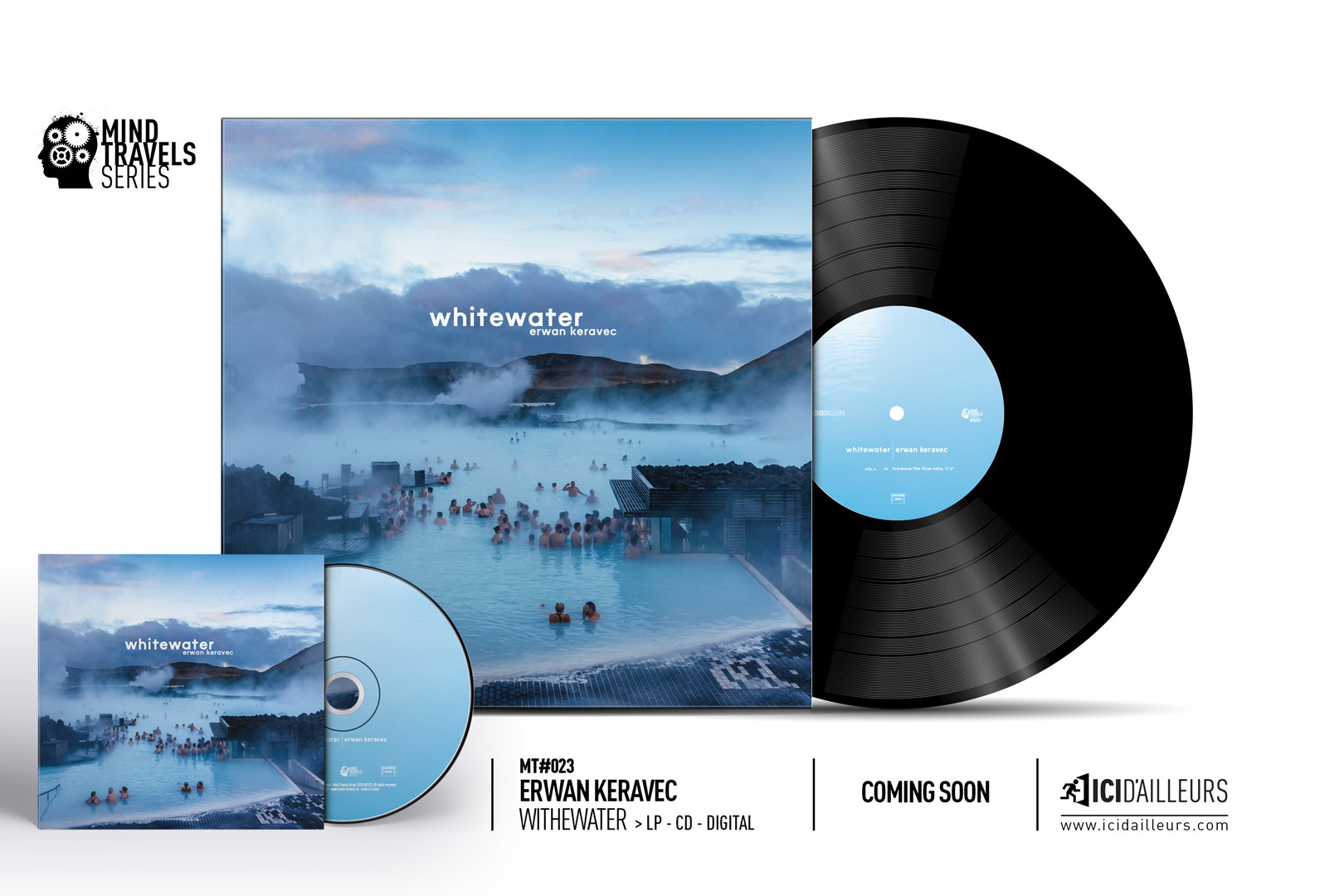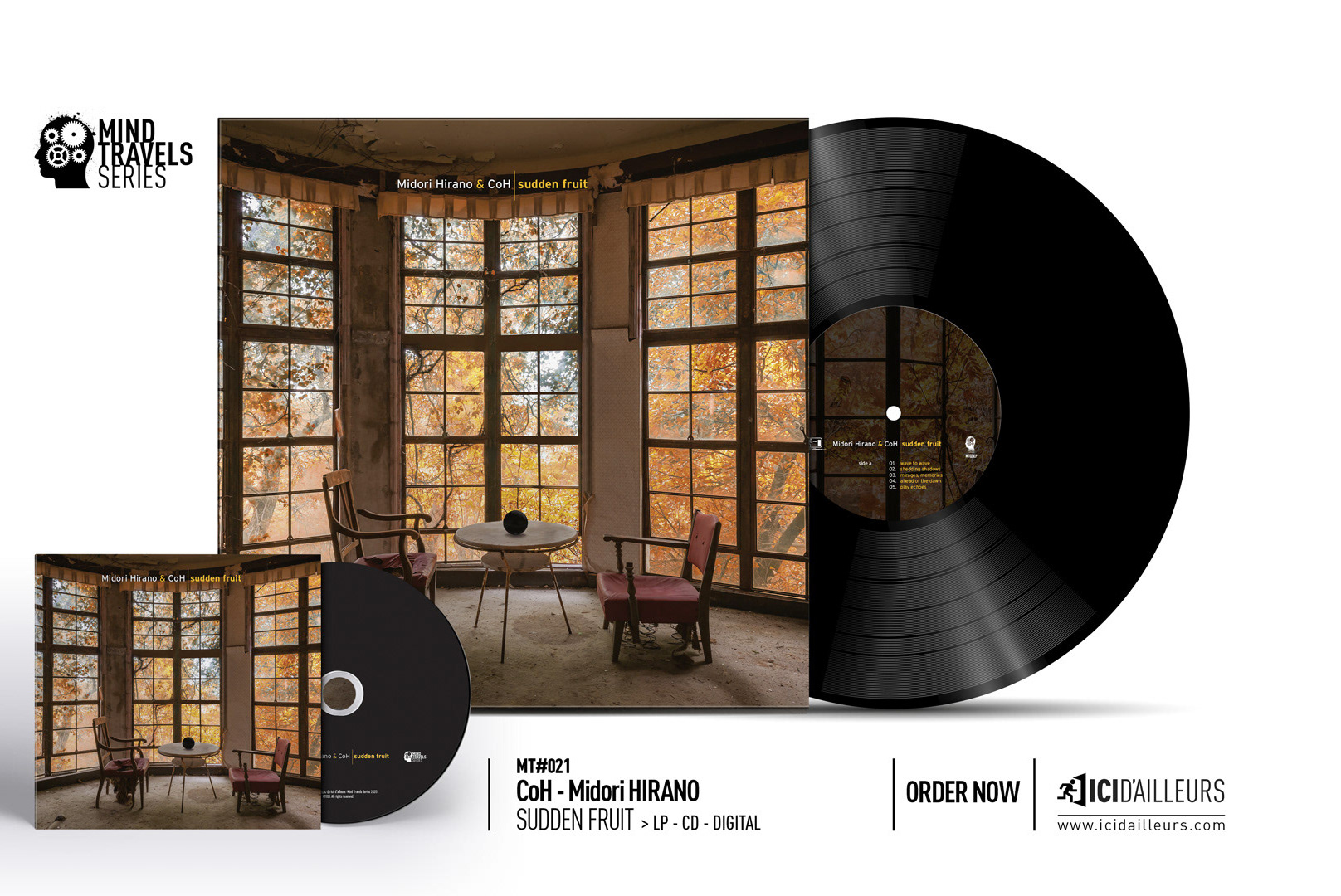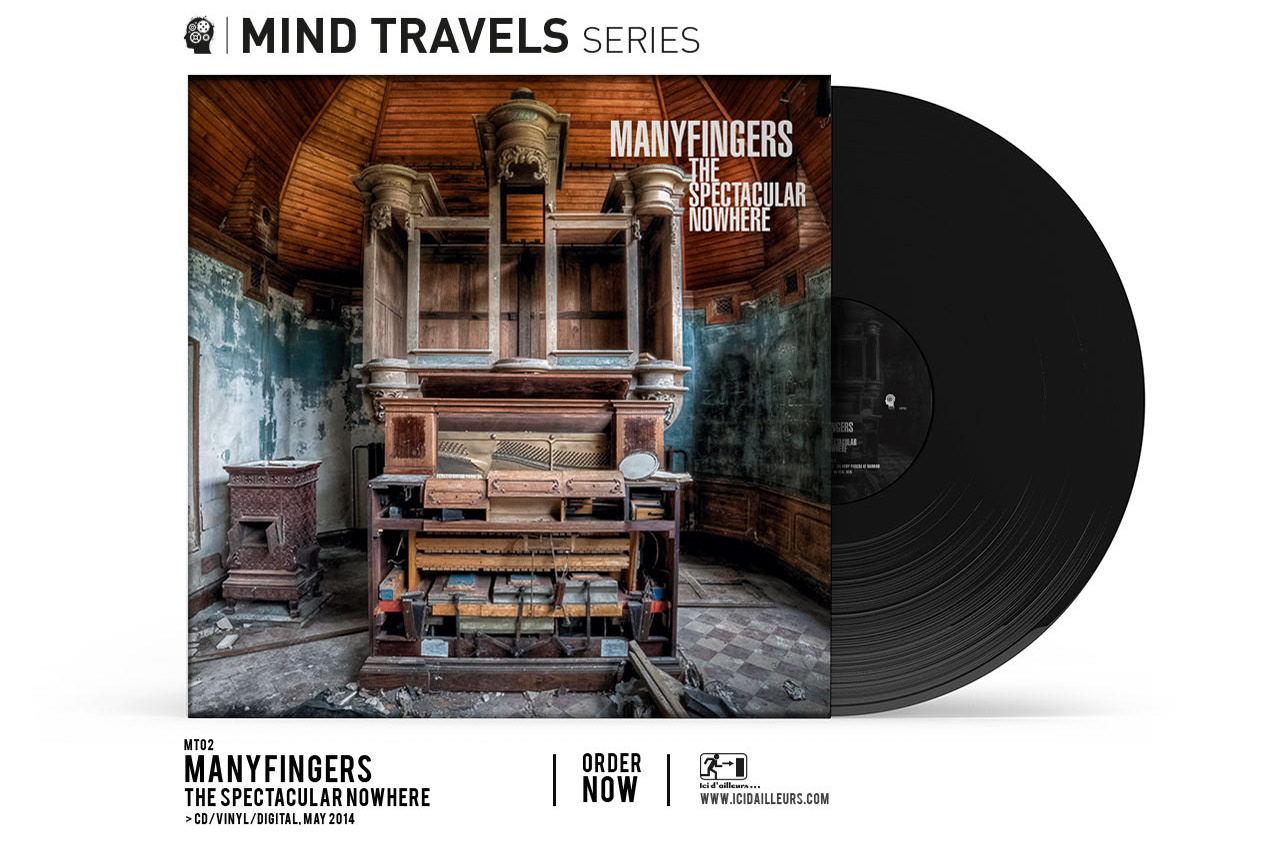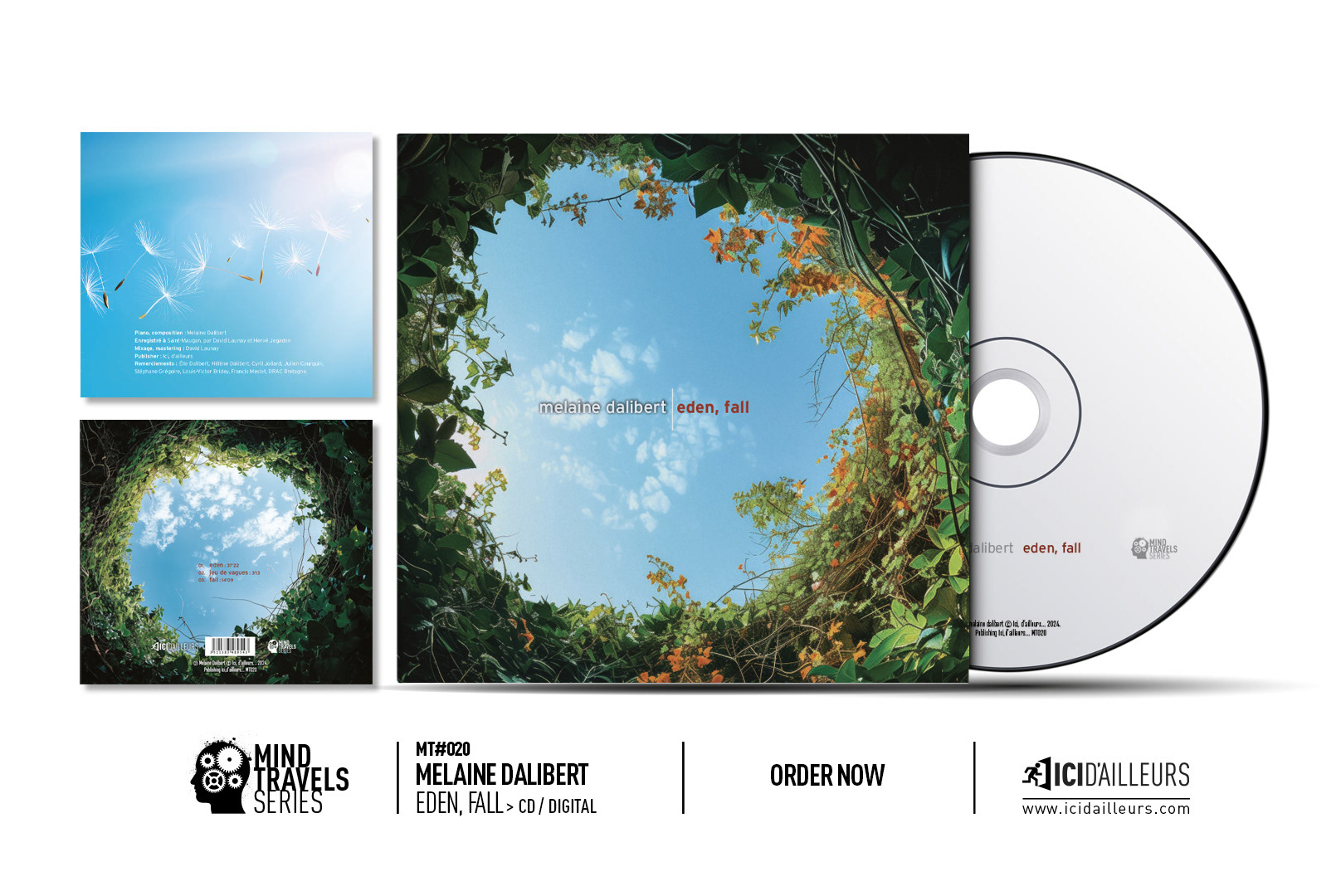Scattered notes seem to stretch time, their repetition and countless combinations evoking (or invoking?) the infinite iridescence of light that accompanies dawn—a ritual as inevitable as it is unpredictable. With his Musique pour le lever du jour, composed over two years and completed in 2017, Melaine Dalibert once described his aim as creating "an infinite piece," without beginning or end. Subtle, intangible, both complex and minimal, the variations forming this hour-long composition—dedicated to Belgian pianist Stéphane Ginsburgh—allowed silence and resonance to blossom into shades of color. Released on the American label Elsewhere Music, led by Yuko Zama, the album was ranked among France Musique's 100 best of 2018. Its abstract, colorful cover? The work of none other than David Sylvian.
Since then, Melaine Dalibert has performed Musique pour le lever du jour in a wide range of settings. Experiencing it in vivo, at dawn or dusk, indoors and outdoors alike, led him to conceive a condensed version of about twenty minutes—"a format (that of an LP side) in which I feel comfortable performing live," he says. During that time, he also released three other albums on Elsewhere Music, all featuring abstract, colorful artwork by his esteemed elder. Dalibert had come to appreciate Sylvian's work from its abstract side first—starting with Blemish and Manafon, the most experimental and atmospheric facets of his vocal output.
Too often forgotten: David Sylvian is not only one of the most singular and captivating voices in pop history, both solo and with his band Japan (1974–1982). He is also the creator of a significant body of ambient work. Since the mid-1980s, his collaborations with Holger Czukay, Jon Hassell, Robert Fripp, Ryuichi Sakamoto, Christian Fennesz, and Stephan Mathieu have enriched this legacy, alongside numerous instrumental pieces—some composed for installations—partially compiled on the double CD Camphor (Virgin, 2002). It was therefore almost naturally, through shared affinities and mutual respect, that the co-author (with Ryuichi Sakamoto) of Forbidden Colours came to contribute to two tracks on Night Blossoms in 2021, delicately veiling the apparent abstraction of these algorithmic pieces with impressionistic electronic textures. Dalibert greatly appreciated this "subtle way of participating in the resonant halo of the piano."
The two pieces forming Vermilion Hours now feel like a culmination. They also, in a moving way, bear the mark of a passing of the torch: between Melaine Dalibert (born in 1979) and David Sylvian (1958) lies the same generational gap as between Sylvian and Czukay (1938–2017) or Hassell (1937–2021). Vermilion Hours is first and foremost a reinterpretation of Musique pour le lever du jour, in a version both condensed and expanded. "I no longer felt entirely in sync with the slightly rushed tempo of the first version—I wanted to align it more closely with what I feel is the right ‘energy’ for this music," Melaine explains. The challenge was to preserve the magic of the "long" version, maintaining its structure and atmospheric depth while making room—however slight—for David Sylvian’s electronic treatments to subtly "baroquize" the whole. The term may seem amusing, given how minimalist and discreet the electronics remain here. Yet, for all its restraint, it exerts a palpable force, delicately multiplying the interplay of resonances and harmonics already at work—like a crimson dawn reflected in water, diffracting into infinity.
"My writing is quite theoretical, very systematic," says Melaine Dalibert. "Arabesque, the album’s other piece, is a good example of this: it’s a ‘spectral’ work in the sense that everything rests on a fundamental note— the lowest F on the keyboard—from which its series of harmonics emerges, tracing a slow sinusoidal movement... But I believe any system must be humanized to be truly moving. My aim was to subject these rational, ‘clinical’ compositional methods to an organic transformation. The electronics do not act as a counterpoint or narrative contribution, but rather as a vibration, an aura. It reminds me of the background of a painting—particularly Paul Klee’s canvases, where he would prepare his backgrounds for weeks. That’s what gives the forms and figures their depth."
This is, indeed, "landscape music," where, if you listen closely, you might hear birds singing in the background. And that is the true essence of these suspended harmonies, these vermilion hours—which transport us, as only the contemplation of nature can, into another space-time, a sonic bath that is also a renewal of the senses.
David Sanson
Since then, Melaine Dalibert has performed Musique pour le lever du jour in a wide range of settings. Experiencing it in vivo, at dawn or dusk, indoors and outdoors alike, led him to conceive a condensed version of about twenty minutes—"a format (that of an LP side) in which I feel comfortable performing live," he says. During that time, he also released three other albums on Elsewhere Music, all featuring abstract, colorful artwork by his esteemed elder. Dalibert had come to appreciate Sylvian's work from its abstract side first—starting with Blemish and Manafon, the most experimental and atmospheric facets of his vocal output.
Too often forgotten: David Sylvian is not only one of the most singular and captivating voices in pop history, both solo and with his band Japan (1974–1982). He is also the creator of a significant body of ambient work. Since the mid-1980s, his collaborations with Holger Czukay, Jon Hassell, Robert Fripp, Ryuichi Sakamoto, Christian Fennesz, and Stephan Mathieu have enriched this legacy, alongside numerous instrumental pieces—some composed for installations—partially compiled on the double CD Camphor (Virgin, 2002). It was therefore almost naturally, through shared affinities and mutual respect, that the co-author (with Ryuichi Sakamoto) of Forbidden Colours came to contribute to two tracks on Night Blossoms in 2021, delicately veiling the apparent abstraction of these algorithmic pieces with impressionistic electronic textures. Dalibert greatly appreciated this "subtle way of participating in the resonant halo of the piano."
The two pieces forming Vermilion Hours now feel like a culmination. They also, in a moving way, bear the mark of a passing of the torch: between Melaine Dalibert (born in 1979) and David Sylvian (1958) lies the same generational gap as between Sylvian and Czukay (1938–2017) or Hassell (1937–2021). Vermilion Hours is first and foremost a reinterpretation of Musique pour le lever du jour, in a version both condensed and expanded. "I no longer felt entirely in sync with the slightly rushed tempo of the first version—I wanted to align it more closely with what I feel is the right ‘energy’ for this music," Melaine explains. The challenge was to preserve the magic of the "long" version, maintaining its structure and atmospheric depth while making room—however slight—for David Sylvian’s electronic treatments to subtly "baroquize" the whole. The term may seem amusing, given how minimalist and discreet the electronics remain here. Yet, for all its restraint, it exerts a palpable force, delicately multiplying the interplay of resonances and harmonics already at work—like a crimson dawn reflected in water, diffracting into infinity.
"My writing is quite theoretical, very systematic," says Melaine Dalibert. "Arabesque, the album’s other piece, is a good example of this: it’s a ‘spectral’ work in the sense that everything rests on a fundamental note— the lowest F on the keyboard—from which its series of harmonics emerges, tracing a slow sinusoidal movement... But I believe any system must be humanized to be truly moving. My aim was to subject these rational, ‘clinical’ compositional methods to an organic transformation. The electronics do not act as a counterpoint or narrative contribution, but rather as a vibration, an aura. It reminds me of the background of a painting—particularly Paul Klee’s canvases, where he would prepare his backgrounds for weeks. That’s what gives the forms and figures their depth."
This is, indeed, "landscape music," where, if you listen closely, you might hear birds singing in the background. And that is the true essence of these suspended harmonies, these vermilion hours—which transport us, as only the contemplation of nature can, into another space-time, a sonic bath that is also a renewal of the senses.
David Sanson
















